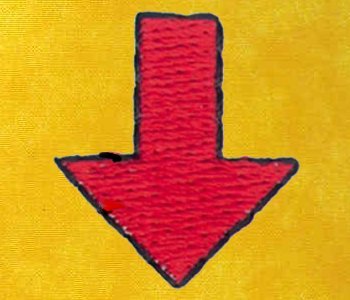[ 63XC.COM | HOW TO | GOING DOWN ]
You're going down
You're riding a trail. Maybe your favourite. Maybe not. You have many other things going through your brain right now that don't concern your fondness for the particulars of your present situation. One of those things going through your brain is that you know there is a hill coming up. The hill in your mind, and soon to be a reality, is a downslope, and steep. Only slight panic has started to creep forward from the back of your brain. The kind of panic that may actually get you to stop and walk your bike -- terrible news for conflicting arguments within your head. Stop riding! Walk! No way! Not because you are afraid of going downhill. But because you know that you can, and have, ridden this particular section of trail with no flaws. If only you could coast. And that is the fear. And the conundrum. You think you can't 'coast'. "I don't want to walk!", you tell yourself. If only you could coast. "But alas, I can't!" you tell yourself again. You have been telling yourself not to coast for so long now that just the idea of coasting strikes fear into the deepest recesses of your cortex. You, most likely by now, have had the inevitable brain-disengagement-from-present-bike-setup and relaxed your legs just that split second only to be reminded, hopefully only gently, that yes, in fact, you are riding a fixed gear bicycle, lovingly looking down at your steed and apologizing for having forgotten and trying to coast. There is hope though. There is a way. It takes some practice. First, on short, very short, steep sections. Then, graduating to the good stuff. The principle applies for the long steep sections too. It is thus... As you approach the crest of the hill, like any other hill, you glance ahead, far ahead, down the hill. You have your line. Even if it isn't the best line, who cares? Stick with it. It's yours now. Own it. Don't second guess it. Start shifting your weight back over the rear wheel. He, he. I said "shifting". Cover your brake levers. You're going to use them. Yes, you should have these if your riding off-road. Both front and rear if you're reading this article looking for tips. Just the front if you're only reading this for entertainment. By "cover", I mean place at least two fingers over the levers. As the hill starts to get steep lift your rear wheel off the ground. Just slightly. And only when your pedals are at the 9 and 3 position (fore-and-aft or "neutral"). At the same time, feather the front brake to help control your rate of descent. Yes, this is a nose wheelie going downhill. But, your ass is so far back that it's really just the bike doing a nose wheelie and not your body. The rear wheel just might hit you in your ass. That's the reason for having a rear brake. Think about it. The other reason for the rear brake is to help stop the pedals in the "neutral", pedals-out-of-the-way, "coasting" position. You will actually only hold this position for brief moments while also pushing the rear of the bike laterally with the trailing foot. As the rear wheel comes down in contact with the dirt let it roll but only 180deg and feather the front brake again lifting the rear wheel and pushing laterally with the other foot now in the trailing position. This technique mostly resembles the telemark skiing style. Brief small turns, dabbing the rear wheel to one side to control rate of descent. Rotating the pedals for half a turn then freeing the wheel from it's contact with ground, coasting for a moment then dabbing the wheel again to control speed then repeat. "Coasting" may be the wrong term but when done properly and with style and grace it sure looks like coasting. Even if only for brief moments. Oh, and your knees! These flop out to the sides while the pedals are coming around and you're setting up for the next wheel dab. It feels funny the first couple of times but it is real important to maintain your body position well over the rear of the bicycle. Don't let your legs bounce you up and possibly over your handlebars. Hope this helps some and doesn't confuse any techniques you may have already developed. While we're on the subject, this rear wheel hop / coasting technique can help with log crossings, too. Just before the log, keep your pedals at the neutral position by lifting the rear wheel and coasting up to it. As you get within one wheel length drop the rear wheel and let the pedals rotate. You should end up with one pedal straight up and one straight down. Now lift the front wheel and push it down hard on top of the log. Lift the rear wheel up just after you push down. The pedals, by now, should keep rotating to neutral and clear the log. You need some speed for this (and practice of course). So don't be afraid of it and go to slow. If done right and at speed the rear wheel won't even touch the log and the front wheel will only appear to float over it to the outside observer. [ TOP ] |
Writer
Scott Hansen set up LeVeL Components, who make extremely nice fixed gear hubs.
Date
v1.0 written May 2007
Related
Learn about Scott's hubs here.
UK / EU riders can buy said hubs here.
The Gonterian has another take on log crossings.
Mailing list
Join the 63xc.com list.
